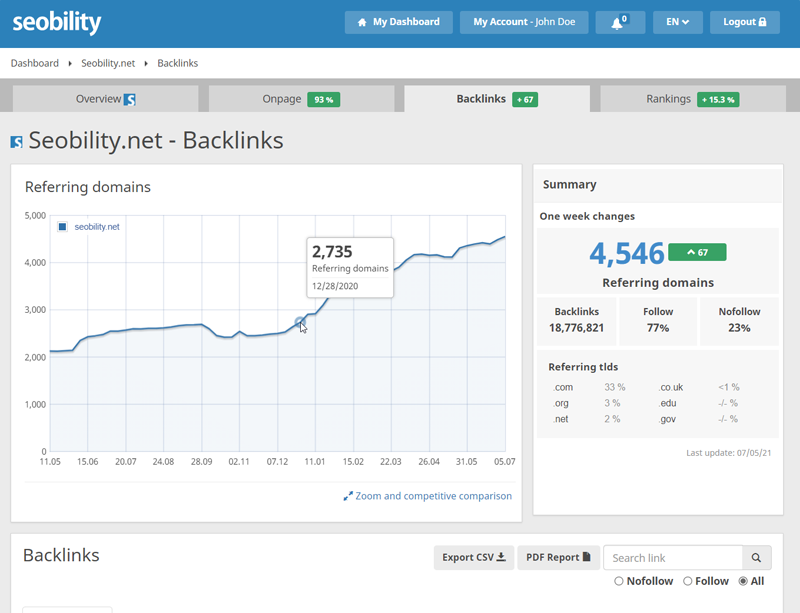PageRank
Contents
What is PageRank?
PageRank (PR) is an algorithm used by Google, that uses links pointing to pages to determine where a page should rank. This algorithm uses backlinks as recommendations by a website and these backlinks were therefore used, alongside other factors, to rank pages in the SERPs.
PageRank used to be made visible but has since been hidden. It worked on a scale from 1 to 10, with pages with a PR Score of 10 having a lot of “ranking power” and pages with a PR of 1 or 2 having very little ranking power.
The history of PageRank
The idea of using backlinks as recommendations within a search engine algorithm first came about in 1998 when Larry Page and Sergey Brin invented PageRank. PageRank works by assigning a level of importance to a page between one and ten. This level of importance is determined by how many important pages link to that page, making links a big ranking factor.
In the early days of PageRank, it was made visible to the public and you could see your PageRank rising when building links to a page. This led to SEOs and webmasters placing a lot of focus on link building, often leading to black hat SEO techniques being used to manipulate rankings.
As Google began implementing various other factors, they stopped showing PR to the public. Google stated [1] that it didn’t stop using PageRank, but that it added more factors to it so that people would stop placing as much focus solely on PageRank.
Although backlinks are still an important part of SEO, other off-page SEO factors added to Google’s algorithms have somewhat reduced their effect. Over the years, the way links are used has also changed, and things like relevance, the reputation of the linking site, the content on the page, and various other factors are taken into account too.
Is PageRank still used?
Although PageRank is no longer made visible to the public, there is reason to believe that a form of PageRank is still used by Google. Backlinks are still an important part of off-page SEO and Google clearly stated that it continued using PageRank after removing the possibility of viewing the PageRank of websites. John Mueller has also gone on record multiple times about their use of PageRank[2]
New tools
Various online tools, including our own backlink analysis tool, provide SEOs with an indication of a webpage’s ranking power. Some tools even go as far as to provide scores similar to that of PageRank.
Although these tools can provide a good indication of your off-page SEO efforts, the database of backlinks is generally a lot smaller than that of Google. Nevertheless, these tools are popular in the SEO community as they provide supporting metrics to measure their link building campaigns.

An image of our backlink analysis tool, which provides an overview of your backlinks as well as an indication of the power each link provides a page
Relevance to SEO
PageRank used to be one of the most important ways for SEOs to monitor their off-page SEO progress. Nowadays, backlinks are still considered one of the most important off-page ranking factors, with various tools providing alternatives to the PR score previously provided by Google.
Although the PageRank score is no longer used in SEO since it isn’t visible, the concept of links influencing the ranking power of a page is still widely agreed upon.
References
- ↑ Beyond PageRank: Graduating to actionable metrics Google Search Central. Retrieved 15 February 2021.
- ↑ JohnMu Status Twitter. Retrieved 15 February 2021.
Related links
- https://searchengineland.com/why-we-shouldnt-forget-about-pagerank-in-2019-315443
- http://pi.math.cornell.edu/~mec/Winter2009/RalucaRemus/Lecture3/lecture3.html